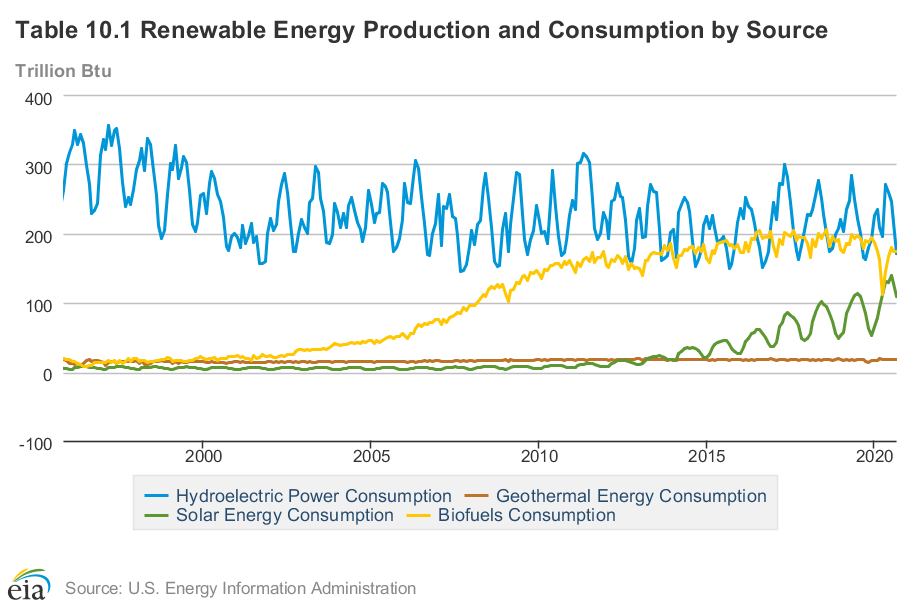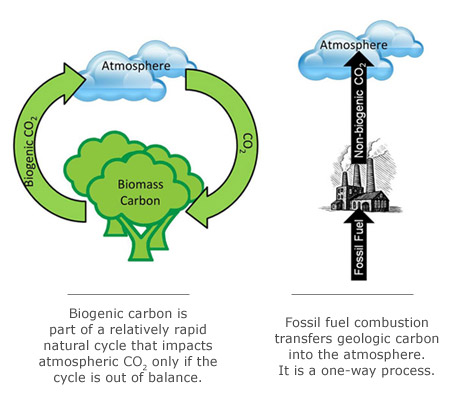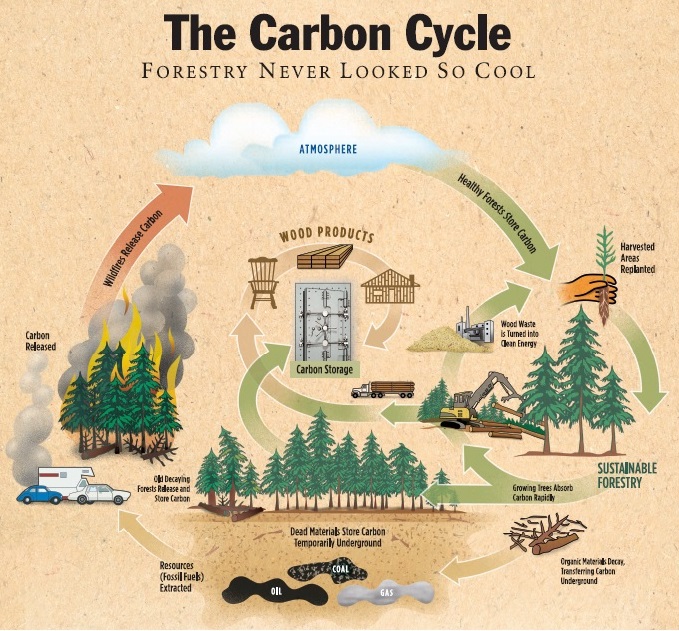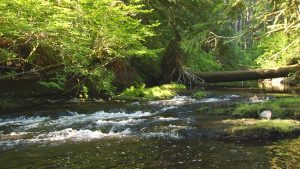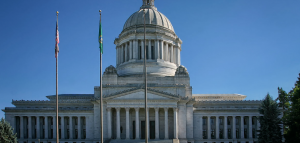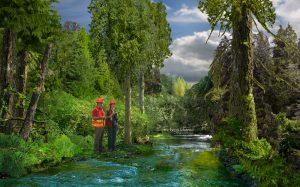Protecting and enhancing the values of sustainable working forests.
WASHINGTON FOREST PROTECTION ASSOCIATION
Biomass Energy
This sustainable energy source is harnessed from the residual wood left behind after responsible timber harvesting operations. What might seem like an old-fashioned technology has now evolved and expanded to efficiently utilize wood waste, offering renewable energy solutions for communities across the Pacific Northwest and the nation.
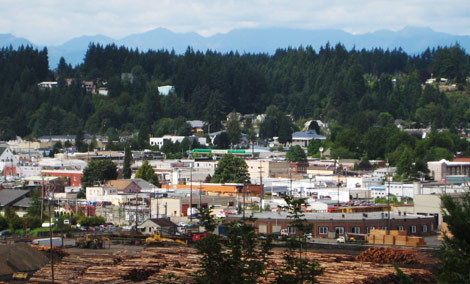
Shelton, Washington
Biomass Q&A
Biomass is a renewable energy source, because the planting and growth of new plants and trees replenishes the supply, and burning biomass to generate energy is also carbon neutral. Also:
By thinning overcrowded and unhealthy forests, removal of woody biomass can improve the health of forests.
Biomass energy generation creates and sustains jobs, especially in rural areas affected by economic downturns in the timber and construction industries.
Biomass energy reduces our reliance on fossil fuels, and specifically reduces our reliance on imported petroleum, which can improve our trade imbalance and enhance our national security.
When wood is burned to produce energy, the carbon dioxide (CO2) that is released into the atmosphere is the same CO2 that would be released if the wood decomposed, so there is no net addition of carbon dioxide to the atmosphere. Also, forests are replanted and the new trees continue the cycle of absorbing and storing CO2 from the atmosphere. In the United States, forestlands are net carbon sinks, meaning more wood is grown than is removed. The Pacific Northwest has the highest productivity forests in the nation, and wood is the dominant biomass resource in Washington, accounting for two-thirds of all potentially available biomass.
No. Geologic carbon emissions from fossil fuels such as coal, which have been buried underground for centuries and otherwise would not be released, add “new” carbon to the atmosphere. Biogenic carbon from biomass would be released anyway as part of the natural cycle of growth, decay and regrowth. As long as the source of biomass comes from sustainable practices, biogenic carbon emission is not dirtier than coal, since it does not increase overall carbon in the atmosphere.
No. The Manomet Center for Conservation Sciences, which did the study, issued a clarification after the media misinterpreted its findings and those misinterpretations were widely reported. John Hagan, the President of the Center, and Thomas Walker, the study team leader, told The New York Times that the media reports “fail to recognize that over time using wood for energy can lead to lower atmospheric greenhouse gas levels.”1 (Emphasis added)
Despite media headlines, the Manomet report indicated that the long-term benefits of biomass fuels far outweighed fossil fuels, largely due to “recycling” trees by planting new ones that absorb carbon dioxide.
The study focused largely on the carbon cycle implications of whole trees grown specifically as biomass fuel in Massachusetts, rather than on the use of residual fiber (chips, bark, branches, etc.), which is what most biomass power plants actually utilize. In addition, the study looked specifically at impacts related to a single forest, rather than biomass from a broader region. Some readers apparently went directly to conclusions based on those parameters instead of looking over the qualifications related to the study, and leapt to incorrect assumptions of cumulative impact.
In addition to providing renewable energy, biomass power plants utilizing wood waste can provide numerous other benefits. They:
Help stop disease and infestation. In Inland West areas such as Eastern Washington and Eastern Oregon and other states, insects such as the mountain pine beetle have devastated millions of acres of pine forests. Removing these infected trees to utilize them as fuel can stop the spread of the insect and also provide energy while reducing the risk of catastrophic wildfire.
Reduce the use of prescribed fire (also known as slash burning). Forest land managers occasionally use prescribed fire to reduce the amount of logging residue known as slash. This is necessary to improve planting success, reduce wildfire risk and in some cases is required by law. Burning this fuel in a biomass plant with effective emission controls is more efficient and reduces the particulates and other substances that otherwise would be released into the atmosphere.
• Improve forest health and sustainability. After a century of fire suppression, and abrupt lack of management on federal forests, unhealthy conditions have developed in some forests, with an unnatural amount of trees or trees that are not well adapted to the site. Thinning the forest and removing undergrowth to utilize it for energy production, while leaving the hardiest trees in place, helps make the forest less susceptible to damage by wind, fire, and disease and helps provide a resource that can help fund these restoration activities.
Biomass plants can provide economic benefits through the
creation or retention of jobs. For example, a 35-megawatt biomass plant would provide about 30 full-time jobs, and potentially another 50 to 100 jobs to collect and transport fuel to the plant. Biomass plants also provide additional economic benefits in terms of taxes paid, supplies purchased, etc.
Biomass electricity generation can also help reduce the import of other fuels such as natural gas from out of state.
The earliest inhabitants of this region burned wood in their campfires as heat. The forest products and maritime industries began utilizing wood to power steam donkeys, in the late 1800s. Today, lumber mills generate nearly all of their energy using waste from the milling process, and there are currently about 40 biomass plants operating in the state of Washington. Biomass sources currently provide about 3 percent of all energy consumed in the U.S, and about 14 percent of the world’s energy needs.
Depending on the interpretation and regulatory impact, this could severely constrain the future of biomass plants. If the federal government takes a shortsighted approach of looking solely at carbon dioxide emitted from the smokestack, instead of the full carbon cycle, then it will severely discourage the responsible development and utilization of renewable biomass in the future. Burning wood debris for biomass energy production is not only renewable and carbon neutral, but it also burns methane, a greenhouse gas, which would be released if the debris were left to decompose.
These facilities burn the same fuel as a fire place or wood stove, but they employ state-of-the-art emission control technology that must meet federal and state air quality laws and regulations. State and federal agencies are also required to monitor these plants to ensure compliance. Without specific approval from regulatory agencies, they would not be allowed to operate.
State laws requires that forest landowners leave both standing trees and downed wood in harvested areas to provide wildlife habitat and enrich soils. Most of the litterfall, or organic matter is delivered to the forest floor during the forest growing cycle. During tree harvest, biomass fuel harvesters are required to ensure that sufficient woody debris is left to comply with state law.
Forest managers utilize the whole tree, seeking the highest and best use of each part. The highest value end use for wood fiber is generated through traditional manufacturing jobs in the forest products industry, which generate four to 11 times as many jobs using the same quantity of wood fiber to generate energy. The beauty of energy generation is that it can be accomplished using excess woody biomass that is available after traditional use needs are met. Biomass energy plants, especially in the Northwest, utilize wood residuals that are a byproduct of the timber harvesting process, rather than timber that could be made into more profitable products such as furniture, lumber and pulp for paper.
Generally, biomass generation plants burn organic fuel such as wood waste to heat water, which creates steam that runs through a turbine to create electricity. Some biomass energy plants also reuse the steam, once it has passed through the turbine, to provide steam heating. Some plants also use biomass in combination with fossil fuel to produce electricity as a way to cut down on the volume of fossil fuel they consume. Each biomass plant must meet the specific federal, state and local regulations applicable to it, its fuel supply and any impacts, in order to be approved by the regulatory agencies.
Biomass energy is particularly beneficial because it can provide “base load” electricity, meaning that it is available 24/7/365, unlike intermittent sources of energy such as solar or wind that are only available part of the time.
Organic biomass is also the only renewable resource that can be used to create liquid transportation fuels, also known as biofuels.
Washington State University is leading a research project to assess the commercial viability of sustainable aviation fuel production from biomass grown, harvested and refined in Washington, Oregon, Idaho and Montana. WSU has been working with Boeing, the U.S. Air Force, Sea-Tac International Airport and others on aviation biofuels for several years.
Woody biomass can be processed into wood pellets, biochar and other materials. These products can be used in wide applications from helping reduce emissions in coal plants to providing sustainable fuel sources for African farmers and improving soil and water quality. Researchers around the world are studying ways to mass produce biochar that could help everything from African farmers to the fight against climate change.
Learn more at Sustainable Building Materials
The significance of biomass energy in the United States:
- Biomass is the country’s largest source of domestic renewable energy, supplying about three times as much energy as wind and solar power combined.
- The more than 100 biomass plants in the country generate 8,500 megawatts of electricity, enough to power 8.5 million homes.
- Provides 18,000 jobs, many of them in rural communities.
- Generates $1 billion a year for the nation’s economy.
- Removes 68.8 million tons of forest debris a year.
- Diverts 36.2 million tons of urban wood waste from landfills a year.
- Each biomass plant contributes $8 million to $14 million a year to the local community where it operates, through salaries, purchases and tax revenue. See Office of Energy Efficiency and Renewable Energy for more information.
In the Pacific Northwest, biomass electricity is primarily generated by controlled burning of wood waste that would otherwise be wasted in landfills, open-air burns, or natural decomposition. This process typically involves burning wood waste to create steam, which powers turbines to generate electricity. Biomass energy production offers significant environmental advantages compared to fossil fuels. While burning fossil fuels releases geologic carbon into the atmosphere, biomass combustion recycles carbon dioxide that would naturally be released through decay or wildfires. This makes biomass energy carbon-neutral as long as sustainable forestry practices are maintained.
The biomass carbon cycle distinguishes it from fossil fuels, as it recycles carbon back into the atmosphere instead of introducing new geologic carbon. This recycling helps reduce the accumulation of CO₂ in the atmosphere, contributing positively to the global carbon cycle.
Sustainable forestry practices are a cornerstone of biomass energy production.
In Washington State, where replanting is mandated by law after timber harvests. On average, three seedlings are planted for every tree harvested, ensuring a continuous carbon-storing cycle. These forests are not only economically beneficial but also contribute to environmental and biodiversity objectives.
Washington State law requires replanting within 3 years. On average, Washington forest landowners replant within 18 months, three trees for every one harvested. Sustainably managed forests that are periodically harvested, planted and regrown to produce a continuing series of products and energy fuel actually sequester and offset more cumulative carbon than forests that are left unharvested.
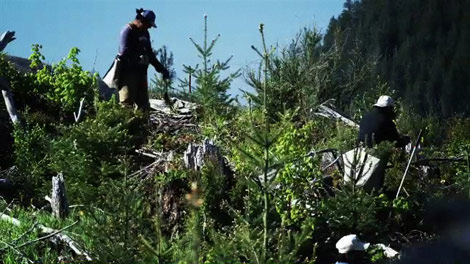
TREND IN GROWING STOCK IN U.S. TIMBER LANDS
Woody biomass in Washington State is a valuable by-product of responsible forest management, replacing the burning of forest residue with renewable energy production. Additionally, forest thinning helps improve forest health by reducing fuel loads in dryland forests, further enhancing biomass feedstock availability. Forest thinnings represent a significant, underutilized source of woody biomass in the United States.
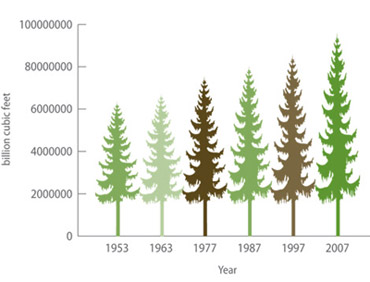
In the United States, we are growing more trees than we are harvesting. Image source: USDA Forest Service, U.S. Forests Resource Facts and Historical Trends, September 2000.
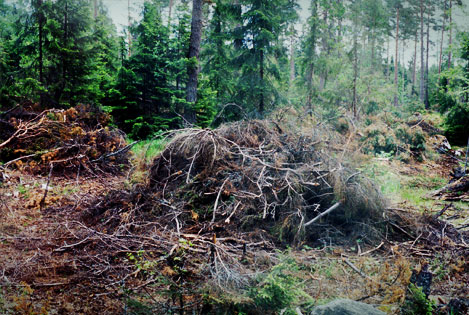
Forest thinnings have been identified as the nation’s largest underutilized source of woody biomass.
HIGHER, BETTER USE OF WOOD
Efforts to maximize wood usage have led to improved milling efficiency, yielding more lumber and less waste. Foresters are dedicated to extracting maximum value from forest products, which are used in various applications, from carbon-storing building materials to paper production and biomass energy generation. With a rich history of sustainable forestry practices, Washington State possesses abundant wood resources that contribute significantly to biomass energy production.
More than 5,000 different products including resins, glues, cosmetics and food are produced from trees.

Our state has more than a century of experience in improving sustainable forestry practices. We are blessed with abundant wood resources that provide more than 2/3 of all potentially available biomass, including forest residue from timber harvests and forest thinning that improves forest health by reducing fuel loads on eastside dryland forests.
Public policies, such as Renewable Portfolio Standards and initiatives to reduce greenhouse gas emissions, support the use of biomass for energy production. Biomass energy offers a dependable power source, unlike intermittent wind or solar energy, contributing to a sustainable energy mix.
In 2008, the Washington State Legislature adopted new laws creating a schedule for reducing greenhouse gas emissions and increasing clean energy sector jobs. The new statutes specifically recognize that emissions of carbon dioxide from combustion of biomass from fuel wood, waste wood or forestry residuals are not considered a greenhouse gas, as long as the region maintains or increases its ability to sequester carbon dioxide through sustainable forestry.
ECONOMY
Biomass energy generation also provides significant economic benefits, including tens of thousands of jobs, many of them in rural communities, and it reduces our reliance on fossil fuel imports from other countries, which can improve our balance of trade and enhance our national security.
Biomass energy also provides another way to sustain the economic viability of maintaining working forests on the landscape. Today, many of our private forest lands are at risk due to economic factors that provide a higher financial return for developing land rather than keeping it as a forest. Increasing the value of the business of forest management by developing new markets such as bio-energy can provide landowners an additional economic return that encourages continued investment in working forests.
As U.S. Agriculture Secretary Tom Vilsack said, “For forest ownership and stewardship to remain viable, it must remain economically rewarding as well for landowners. By generating rural wealth, we can make it possible again for landowners to sustain our forests and our working landscapes.”
Critics of biomass energy often misconstrue the science or distort facts. It’s essential to recognize the overall benefits of biomass energy in promoting sustainable forestry and mitigating climate change. As the Intergovernmental Panel on Climate Change (IPCC) acknowledges, “a sustainable forest management strategy aimed at maintaining or increasing forest carbon stocks, while producing an annual sustained yield of timber, fiber or energy from the forest will generate the largest sustained mitigation benefit.”
